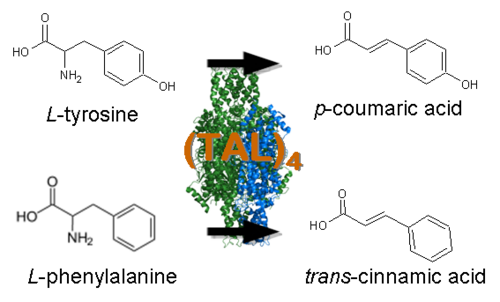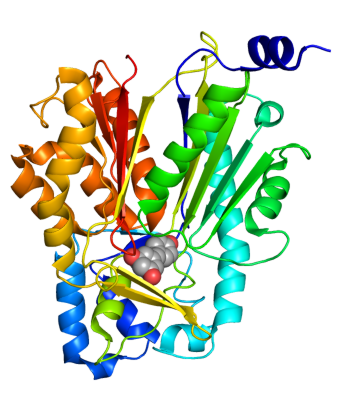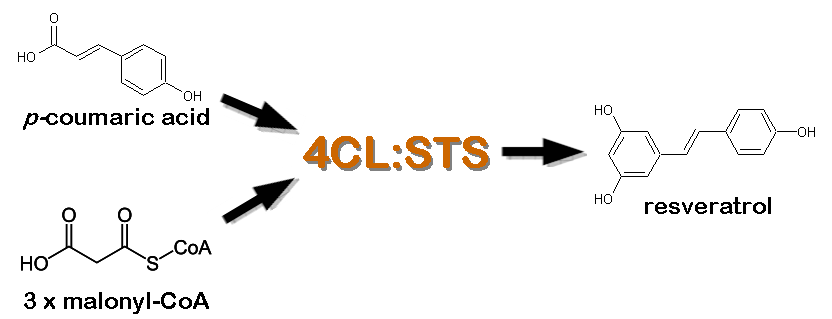
OUR TEAM :::
SUMMARY ::: INTRODUCTION ::: STRATEGY ::: RESULTS ::: ONGOING WORK
Pathway Design for Resveratrol Biosynthesis
- Tyrosine Ammonia Lyase (aka TAL, BBa_K122010) - TAL catalyzes the conversion of L-tyrosine to p-coumaric acid and ammonia. TAL also exhibits Phenylalanine Ammonia Lyase (PAL) activity, converting L-phenylalanine to trans-cinnamic acid and ammonia. Our work has focused on using Rhodotorula glutinis TAL because its ratio of TAL to PAL activity is high compared with other TAL homologs. In addition, previous studies have shown that this enzyme can be expressed as a functional protein in Saccharomyces cerevisiae and Escherichia coli. While the p-coumaric acid produced by TAL will serve as a substrate for resveratrol biosynthesis, the trans-cinnamic acid is expected to add a "floral" and "honey-like" bouquet to the beer.

- 4-coumarate CoA ligase :: Stilbene Synthase Fusion Protein (aka 4CL:STS, BBa_K122005) - This enzyme fusion is comprised of Arabidopsis thaliana 4-coumarate-CoA ligase (4CL), which catalyzes the conversion of p-coumaric acid to 4-coumaroyl-CoA, and Vitis vinifera Stilbene Synthase, which catalyzes the condensation of resveratrol from 4-coumaroyl-CoA and three malonyl-CoA molecules. This 4CL:STS fusion protein was selected for our project because it has been shown to more efficiently produce resveratrol than coexpression of the proteins separately (possibly due to substrate channeling).
Circuit Design for Recombination in Yeast
- Our design goal was to construct a circuit that would propagate through several generations without a selection pressure and be highly expressed during all stages of fermentation. To address these goals we constructed three expression cassettes that, when concatenated, would integrate genomically into a highly transcribed locus, have an inducible selectable marker, and express the resveratrol pathway highly under anaerobic conditions.
Cellular Chassis
Fermentation Apparatus
|
OUR TEAM :::
SUMMARY ::: INTRODUCTION ::: STRATEGY ::: RESULTS ::: ONGOING WORK
|
|
 "
"







